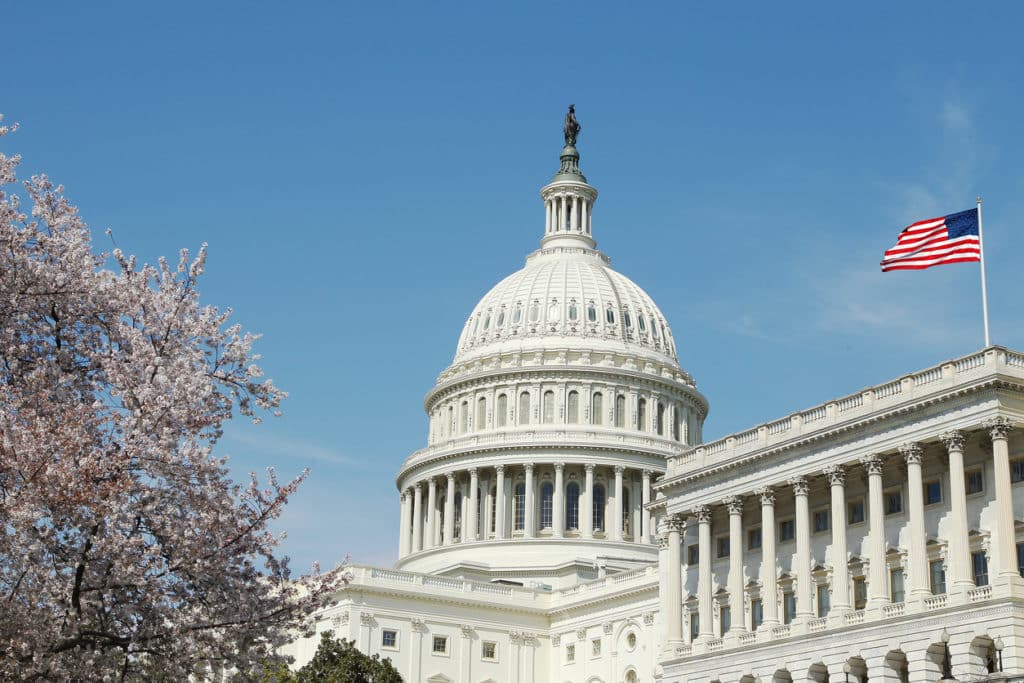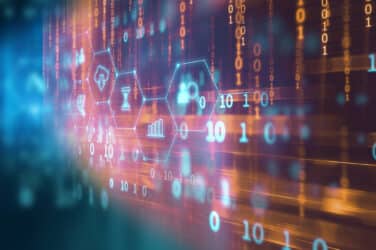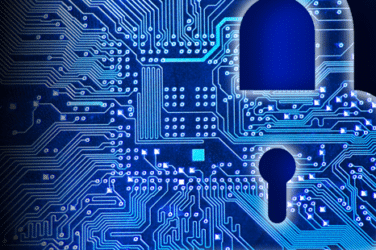

The Financial Services Committee held a hearing on 5 June on Next Generation Infrastructure: How Tokenization of Real-World Assets Will Facilitate Efficient Markets.
Tokenization is the creation of a unique, digital representation of an asset that can be transacted and stored with blockchain technology. There are arguments that tokenizing real-world assets can help increase liquidity, enhance price discovery, increase transparency, increase access, enable fractional ownership – especially in asset classes that require efficient manual processes or are not transparent, such as private markets.
Once assets are on-chain, smart contracts can be programmed to automatically process events across the lifecycle of the asset such as paying dividends to holders. For example, BlackRock’s tokenized money market fund, USD Institutional Digital Liquidity Fund (BUIDL), paid $1.7m in monthly dividends to holders on the ethereum blockchain.
Today, the @BlackRock USD Institutional Digital Liquidity Fund (BUIDL) paid out $1.7 million in monthly dividends to holders on the @ethereum blockchain.
BUIDL is the largest tokenized fund, providing US dollar yields to holders.https://t.co/J41qDJnwvB
Securitize is proud to… pic.twitter.com/PomFcRSEL4
— Securitize (@Securitize) June 3, 2024
There are two legislative proposals according to the committee memorandum on the hearing. The first requires regulators to conduct a study to assess whether additional guidance or rules are necessary to facilitate the development of tokenized securities and derivatives products, and for other purposes. The second, would require the Federal Reserve, Federal Deposit Insurance Corporation, Office of the Comptroller of the Currency, and the National Credit Union Administration to jointly submit a report on trends in the use of blockchain technology to tokenize traditional assets.
#WATCH: Chairman @RepFrenchHill at this morning's Digital Assets Subcommittee hearing:
"Tokenization can leverage the efficiency and transparency of blockchains to help modernize U.S. markets."
Read more 🔗https://t.co/1wAvNDVZbS
📺 Watch his remarks 👇 pic.twitter.com/8UpNpZVwvf
— Financial Services GOP (@FinancialCmte) June 5, 2024
Nadine Chakar, global head of DTCC Digital Assets
Chakar was a witness at the hearing and said in her statement that bringing the benefits of tokenization to mature markets such as the U.S. public equities markets and the U.S. Treasury securities markets, which collectively are over $75 trillion, is a tremendous opportunity, but that should come with the highest of regulatory standards.
“The gold standard for tokenization should be a regulatory framework that largely aligns to and is derived from current financial regulation, following the “same activity, same risk, same regulation” approach, while recognizing that some areas may need refinement and clarification,” she added.
DTCC, the US post-trade infrastructure, also believes that tokenization of traditional financial assets has the potential to address certain limitations of the current post-trade process by modernizing, streamlining, and simplifying financial industry infrastructure with a shared fabric of common information, but Chakar warmed that a wholesale move to DLT-based financial services would be a massive undertaking.
Today Nadine Chakar testified to Congress on tokenization. Speaking to the House Financial Services Subcommittee on Digital Assets, Nadine touched on the ways that DLT could advance transaction processing and lifecycle management of real-world financial assets — such as… pic.twitter.com/WBvLfxtZe4
— DTCC (@The_DTCC) June 5, 2024
“While the T+1 transition has been a herculean engagement for the financial markets, it would be a relatively minor shift in comparison to fully transitioning financial markets to a DLT-based financial system,” she said. “ To approach this new reality, there will need to be coordination and rationalization of numerous efforts and market participants. Happily, this has been and continues to be a unique role for financial market infrastructures (FMIs) like DTCC.”
DTCC has already conducted a number of efforts, both internally and in collaboration with market participants, to further develop the tokenization of traditional financial assets as well as broader use cases for DLT and believes existing U.S. financial regulatory structure is largely sufficient to support ongoing innovation in financial markets. However, areas of study could include the criteria around ensuring legally enforceable possession and control of tokenized assets; the operational, cyber, and overall resiliency standards and appropriate treatment of tokenized financial assets under financial responsibility, bankruptcy, and other insolvency regimes.
Carlos Domingo, co-founder and chief executive of Securitize
Domingo was a witness at the hearing and said in his statement that Securitize provides a regulated path for companies to tokenize their financial assets and issue, sell, and trade securities on the blockchain for the broader capital markets.
“Early in our journey, we recognized the need to become a registered entity to provide those services lawfully,” he added.
In July 2019 the company filed for registration as a transfer agent with the SEC, which was deemed effective. In September 2020 Securitize acquired broker-dealer and Alternative Trading System (ATS) licenses to legally sell and provide a regulated marketplace for the trading of tokenized securities. In January 2021 the company filed with FINRA to settle trades of digital asset securities in its ATS, which was approved in August 2021 after an eight-month review process.
Let's go!! pic.twitter.com/eZvWK6FxsP
— Carlos Domingo (@carlosdomingo) June 5, 2024
Securitize has been primarily focused on private capital markets which Domingo said lack modern, standardized digital infrastructure and are encumbered with inefficiencies, outdated intermediaries, lack of accessibility to individual investors and liquidity issues.
“We believe this is the most optimal place to start and expand the tokenization of the securities ecosystem,“ said Domingo. “But while the private markets present the best use case right now, it is only the beginning.”
Domingo provided n outline of the areas where legislation or SEC guidance would clear a path for applying blockchain technology to a broad set of regulated financial products including clarity in the definition of digital asset securities, or tokenized securities and extending and expanding the Special Purpose Broker-Dealer (SPBD) regime which authorizes entities to custody tokenized securities. He highlighted that only one SPBD has been approved and has not been able to operate or launch any commercial services and SPBDs cannot custody stablecoins, which are critical to the efficiency of the on-chain settlement environment.
“We strongly feel that any digital asset legislation the Committee considers should allow for SPBDs to hold payment stablecoins, which is integral to enabling efficient on-chain transactions between securities and cash,” he added.
In addition, he recommended that tokenized securities should be allowed to use public, permissionless blockchains in addition to private, permissioned chains; that digital transfer agents should be recognised and that ATSs should continue to be enabled as eligible trading platforms for tokenized securities in perpetuity. As a result, registered ATSs within SPBDs should be allowed to facilitate the settlement of transactions in tokenized securities.
“To realize this promise and avoid falling behind Europe and other markets where regulations for tokenized securities are already in place, I encourage you to prioritize legislation that facilitates safe, responsible, and compliant tokenization of financial assets as soon as possible,” he concluded.
Robert Morgan, chief executive of USDF Consortium
Morgan was also a witness at the hearing and said in his statement that tokenization allows the development of products and services that can benefit consumers and small businesses.
USDF is a membership-based association of insured depository institutions which aims to further the adoption and interoperability of a bank-minted tokenized deposit. Members are, for example, exploring how tokenization can improve the construction lending process by programming loan disbursements to occur at the completion of certain milestones, like pouring the foundation of a new building or receiving permitting approvals.
“This can help contractors and their employees get paid more quickly and reduce settlement risk,” he added. “Moreover, by reducing the costs to the banks to manage the relationship, the cost of credit should decrease.”
He continued that tokenization has the potential to promote financial inclusion and help ensure that the United States remains a global leader.
“We believe the bank regulatory framework is well equipped to manage the risks associated with this novel technology and that tokenized deposits are the best way to realize these benefits,” said Morgan.







